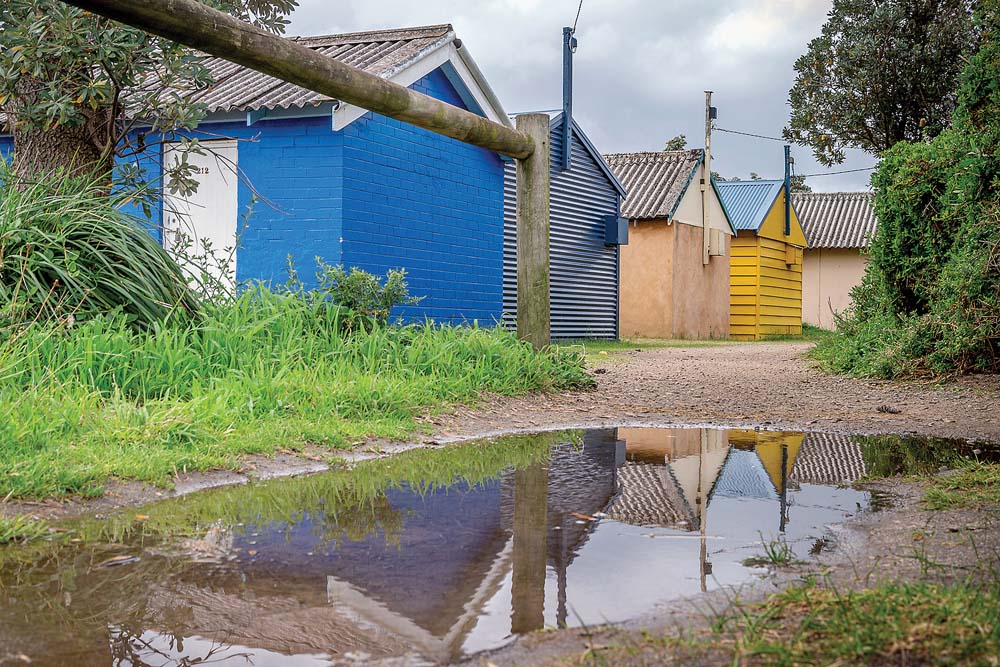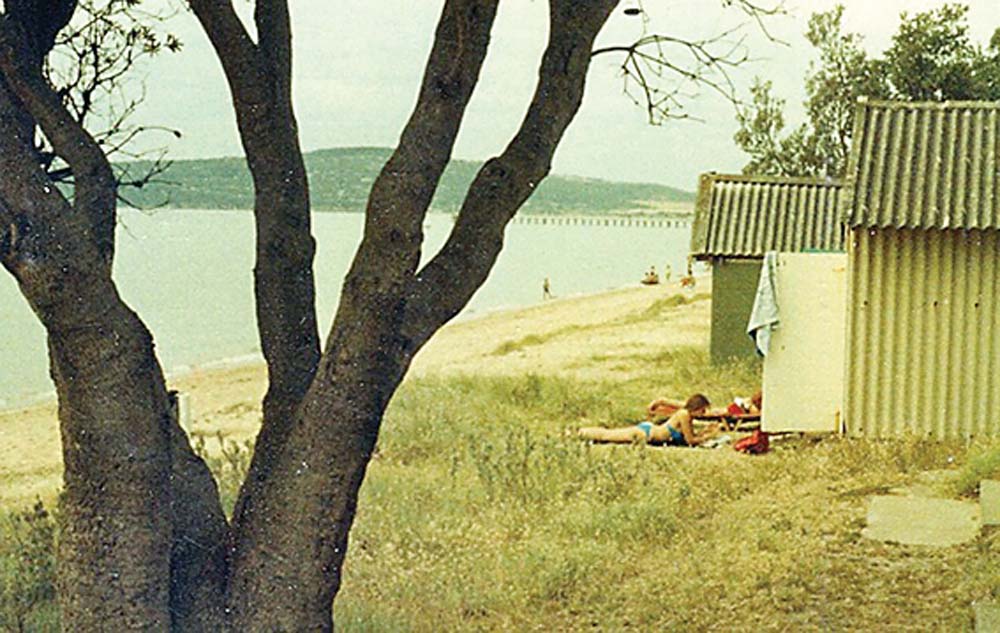
AN unknown number of the 1300 colourful beach boxes regarded as attractions on Mornington Peninsula beaches and foreshores could be death traps.
Potentially deadly amounts of asbestos has been found in about 120 of the beach boxes on beaches controlled by Mornington Peninsula Shire and Dromana foreshore committee, but details of another 500 boxes is un-known.
The owners of the Dromana beach boxes have been asked to remove asbestos from their buildings but no such request has been issued by the shire.
The mayor Cr Sam Hearn said none of the asbestos in 89 of the 824 beach boxes on shire-controlled beaches had been put in the “immediate elevated risk level category”.

The shire is already under fire from beach box owners over a proposed new set of rules and the High Court is expected to soon hand down its decision over a challenge by the Mornington Peninsula Beach Box Association to annual fees charged by the shire.
The politically influential and seemingly cashed up association describes the peninsula’s beach boxes as a “colourful cluster of historical icons” that “grouped together … assist social harmony and create a sense of community”.
John Steele, a Dromana Foreshore Committee member, said the use by date recommended by asbestos products’ manufacturer James Hardie Industries expired years ago.
He said “salt, sand and wind” made asbestos on beach boxes “friable and brittle”, creating a fine dust that was almost impossible to see in sand or in-side beach boxes.
Tests had shown the presence of asbestos dust “and you can imagine young children and babies crawling around in it when their parents shelter in their beach box if it’s windy or raining”.
Mr Steele, who suffers from asbestos-related illnesses, said he removed asbestos from his family’s beach box 30 years ago.
While “everyone knows about it”, foreshore committees were unable to force asbestos removal.
“Dromana [with 30 sheds out of 240 having asbestos] is pretty good, but sheds on lots of other foreshores are hidden,” Mr Steele said.
“James Hardie gave ‘super six’ asbestos cladding and roofing a life span of 25 years. As the last sheets were used in the mid-1980s, they are now well past 25 years. Some must be 50 years beyond this guideline.”
Mr Steele said swab tests taken from sheds under the roofs on the foreshore “have shown alarming levels of fibres”.
“The health risks are very real for owners, visitors and staff that work on the foreshore. The risks on the foreshore are far greater than similar constructions away from the foreshore.”
Mr Steele warned that claims for compensation against foreshore commit-tees and the shire would be easy to prove.
“The crunch time will come. You can’t have an unsafe workplace and we all know it [asbestos] is there.”
New regulations proposed for beach boxes under the shire’s control include a requirement for licence holders to have $20 million public liability insurance. Licence holders must also either own property or live in the shire.
Cr David Gill said beach boxes were sited on leased public land and should not be a profit-making venture.
He said asbestos in beach boxes was “a huge issue” and the shire “should be leading on this as we have the most in Victoria here on the peninsula”.
The shire’s proposed regulations, if adopted after a six-week public comment time, will ban the construction of any more beach boxes as well as limiting licence holders to having one beach box and forcing disconnection of utilities: water, power or gas (“Beach box owners face tougher rules” The News 6/4/20).
“The asbestos issue is not resolved, many still have asbestos and much of it has simply been buried it in the sand,” Cr Gill said.
“The elements at the foreshore make it a folly to claim that asbestos is in any way safe.”
Cr Gill said the “present idea” was to bring the new leasing regulations in over five years and give “locals more opportunity to have the privilege of using a beach shed on public land”.
He said 56 per cent of beach boxes had been sold at some stage “or kept in the hands of people who do not live on the peninsula”.
“The underlying unspoken objection will be the perceived loss of investment profit which will occur when the market restrictions are known,” he said.
“This selling of a licence over public land for individual profit should be the real subject of any debate.”
First published in the Southern Peninsula News – 28 April 2020


